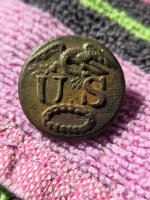Assembler
Silver Member
- May 10, 2017
- 3,105
- 1,185
- Detector(s) used
- Whites, Fisher, Garrett, and Falcon.
- Primary Interest:
- Prospecting
Hello
Have a small 2 x 4 inch jaw crusher that is rebuilt. The main shaft (1 1/4 inch) now has a standard keyway cut into it instead of just a set screw. This one reads in a 1898 manual online about jaw crushers and calls this size crusher a "0 Assayer size" crusher. The manual points out that all jaw crushers should have a "Shear point" that fails first before breaking other parts. The question is a good "Shear point" a aluminum keystock or is brass a better keystock? What are the differences? What is the best way to free or pull the flywheel on a jaw crusher and how often should one replace the keystock?
The Jaw crusher was cast and made in Boulder Col. say between 1920's - 1940's with old babbit bearings. Is this crusher designed to crush down to around 1/4 - 3/8 inch first pass?
Thank you.
Have a small 2 x 4 inch jaw crusher that is rebuilt. The main shaft (1 1/4 inch) now has a standard keyway cut into it instead of just a set screw. This one reads in a 1898 manual online about jaw crushers and calls this size crusher a "0 Assayer size" crusher. The manual points out that all jaw crushers should have a "Shear point" that fails first before breaking other parts. The question is a good "Shear point" a aluminum keystock or is brass a better keystock? What are the differences? What is the best way to free or pull the flywheel on a jaw crusher and how often should one replace the keystock?

The Jaw crusher was cast and made in Boulder Col. say between 1920's - 1940's with old babbit bearings. Is this crusher designed to crush down to around 1/4 - 3/8 inch first pass?
Thank you.



 may take to some clubs and crush other's rocks.
may take to some clubs and crush other's rocks. gold pan that given rock.
gold pan that given rock. 



 Can any prospecting time be saved by using the Falcon metal detector and not turning all the rock into powder form as far as sampling goes?
Can any prospecting time be saved by using the Falcon metal detector and not turning all the rock into powder form as far as sampling goes? 

